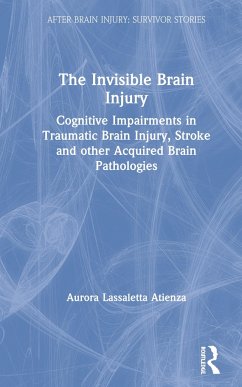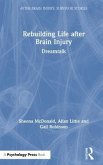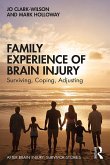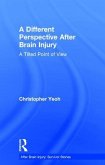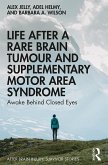This unique book is written by a qualified clinical psychologist who has also suffered a traumatic brain injury (TBI). It gives her perspectives both as a patient and as a clinician, on the less visible cognitive, emotional and behavioural symptoms common to TBI.
Hinweis: Dieser Artikel kann nur an eine deutsche Lieferadresse ausgeliefert werden.
Hinweis: Dieser Artikel kann nur an eine deutsche Lieferadresse ausgeliefert werden.
'Aurora Lassaletta writes an insightful and engaging account of the consequences of her brain injury which is truly inspiring. This book succinctly describes and demonstrates with such clarity the invisible consequences of traumatic brain injury (TBI) that so many experience but find it tricky to explain. Throughout the book she takes us on a journey through these consequences and how she comes to learn to work with them to lessen their impact on her day-to-day life. Her honesty and openness about the ongoing process of acceptance and reflections on identity within this context is so important in gaining insight into the psychological challenges faced following a TBI. This book will be of great value to those who have experienced a brain injury and their families as well as clinicians and researchers working in the field. I would encourage everyone to read this book who has experience of or interest in the impact of acquired brain injury. Thank you for sharing your experiences.' - Fiona Ashworth, DClinPsych, AFBPsS, Anglia Ruskin University, UK
'Wow! This book captures the essence of the brain injury experience brilliantly. It is written in clear language that is easy to read and digest, addressing all the common challenges that people with brain injuries and their families go through in a way that few other such books have done. As both a clinical psychologist and a brain injury survivor, Aurora Lassaletta uniquely applies insightfulness and keen observation to her personal journey from "normal life" to injury and on through years of rehabilitation and personal growth. Her message of perseverance and hard work and hope is an inspiration not only for survivors and their families, but also for professionals, who will undoubtedly re-think their stereotypes of rehabilitation as mostly impairment-based and only relevant in the acute stages of injury. I can't wait to have the book in hand to recommend to my colleagues and clients with brain injuries alike.' - Jill Winegardner, PhD, Director of Neuropsychological Rehabilitation, University Hospitals Cleveland Medical Center, Cleveland, Ohio, USA
'This book, written by a colleague, provides a moving, honest and brave account of the experience of suffering a traumatic brain injury. The narrative and commentary vividly brings to the reader the sheer determination, professional support, and resilience required to make the long journey back to living a meaningful life after suffering a traumatic brain injury. It is essential reading for all of those interested in the real story of what long-term rehabilitation after traumatic brain injury actually entails for many people.' - Rudi Coetzer, DClinPsy, School of Psychology, Bangor University, UK.
'Wow! This book captures the essence of the brain injury experience brilliantly. It is written in clear language that is easy to read and digest, addressing all the common challenges that people with brain injuries and their families go through in a way that few other such books have done. As both a clinical psychologist and a brain injury survivor, Aurora Lassaletta uniquely applies insightfulness and keen observation to her personal journey from "normal life" to injury and on through years of rehabilitation and personal growth. Her message of perseverance and hard work and hope is an inspiration not only for survivors and their families, but also for professionals, who will undoubtedly re-think their stereotypes of rehabilitation as mostly impairment-based and only relevant in the acute stages of injury. I can't wait to have the book in hand to recommend to my colleagues and clients with brain injuries alike.' - Jill Winegardner, PhD, Director of Neuropsychological Rehabilitation, University Hospitals Cleveland Medical Center, Cleveland, Ohio, USA
'This book, written by a colleague, provides a moving, honest and brave account of the experience of suffering a traumatic brain injury. The narrative and commentary vividly brings to the reader the sheer determination, professional support, and resilience required to make the long journey back to living a meaningful life after suffering a traumatic brain injury. It is essential reading for all of those interested in the real story of what long-term rehabilitation after traumatic brain injury actually entails for many people.' - Rudi Coetzer, DClinPsy, School of Psychology, Bangor University, UK.

